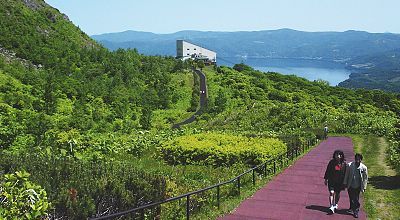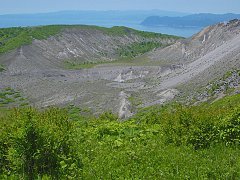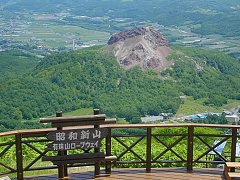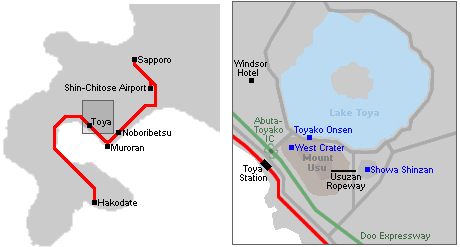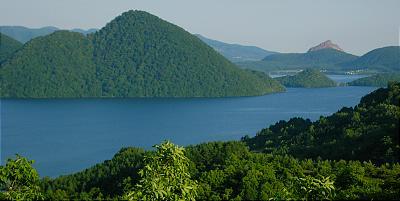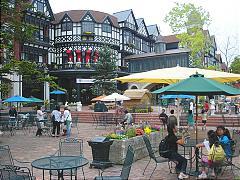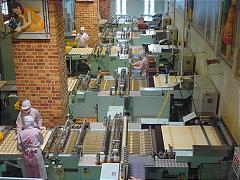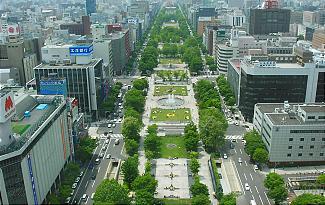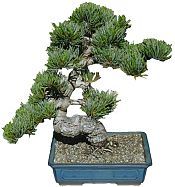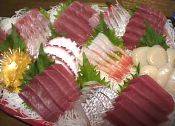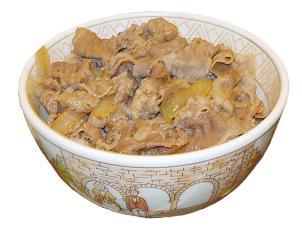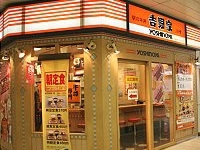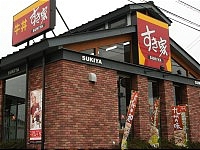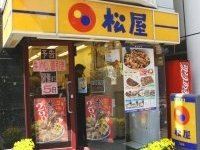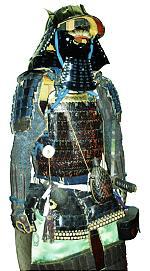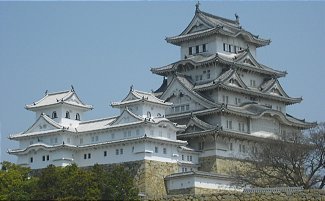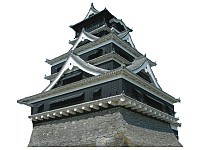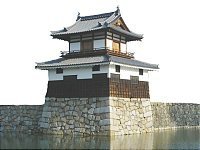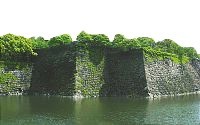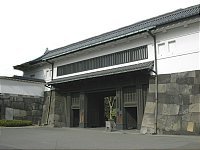Azuchi-Momoyama Period (1573 - 1603)
 |
| basic information |
Oda Nobunaga achieved control over the province of Owari (around the modern city of Nagoya) in 1559. As many other daimyo, he was keen in uniting Japan. Strategically favorably located, he succeeded in capturing the capital in 1568.
After establishing himself in Kyoto, Nobunaga continued to eliminate his enemies. Among them were some militant Buddhist sects, especially the Ikko sect (Pure Land Sect) which had become very powerful in several provinces. Nobunaga destroyed the Enryakuji monastery near Kyoto completely in 1571. His fight against the Ikko sect continued until 1580.
Rather fortunate was Nobunaga concerning two of his most dangerous rivals in the East: Takeda Shingen and Uesugi Kenshin. Both of them died before they were able to confront Nobunaga. After Shingen's death, Nobunaga defeated the Takeda clan in the battle of Nagashino (1575), making use of modern warfare.
In 1582, general Akechi murdered Nobunaga and captured his Azuchi castle. Toyotomi Hideyoshi, a general fighting for Nobunaga, reacted very quickly, defeated Akechi, and took over control. Hideyoshi continued to eliminate remaining rivals. He subdued the Northern provinces and Shikoku in 1583 and Kyushu in 1587. After defeating the Hojo family in Odawara in 1590, Japan was finally reunited.
In order to bring the country under absolute control, Hideyoshi destroyed many castles that were built throughout the country during the era of civil wars. In 1588 he confiscated the weapons of all the farmers and religious institutions in the "Sword Hunt". He forbade the samurai to be active as farmers and forced them to move into the castle towns. A clear distinction between the social classes should increase the government's control over the people. In addition, a land survey was started in 1583, and a census carried out in 1590. In the same year, Hideyoshi's large castle, the Osaka Castle, was completed.
In 1587, Hideyoshi issued an edict expelling Christian missionaries. Nevertheless, Franciscans were able to enter the country in 1593, and the Jesuits remained active in Western Japan. In 1597 Hideyoshi intensified the persecution of Christian missionaries, forbade further conversions, and executed 26 Franciscans as a warning. Foreign traders and missionaries had acted aggressively and intolerant towards native Japanese institutions in an era when their fellow countrymen were conquering and colonizing other parts of the world in the name of Christianity.
After uniting the country, Hideyoshi attempted to realize his rather megalomaniac dream of conquering China. In 1592, his armies invaded Korea and captured Seoul within a few weeks; however, they were pushed back again by Chinese and Korean forces in the following year. Hideyoshi stubbornly didn't give in until the final evacuation from Korea in 1598, the same year in which he died.
Tokugawa Ieyasu, who had been an intelligent partner of Hideyoshi and Nobunaga, succeeded Hideyoshi as the most powerful man of Japan.
